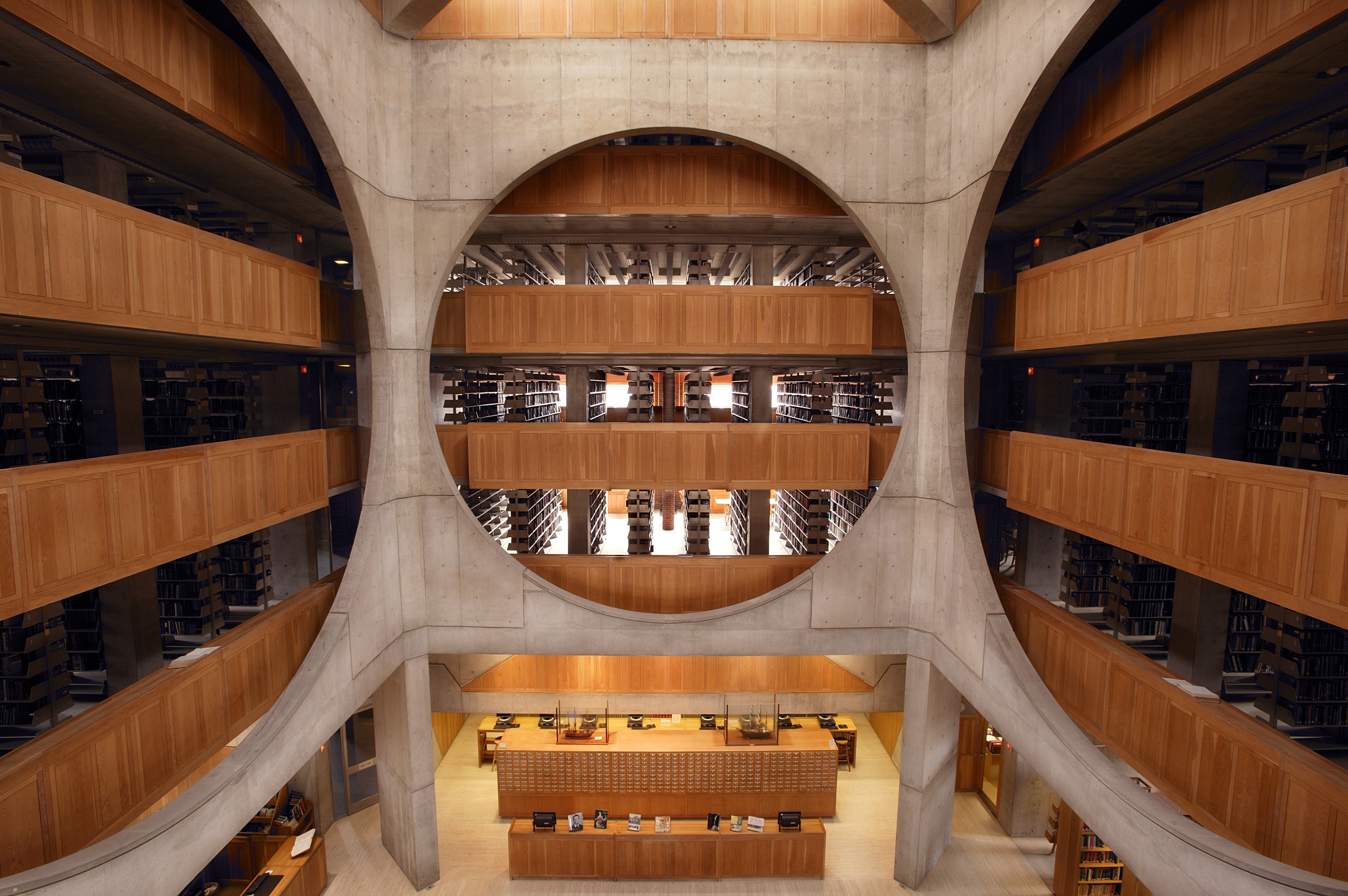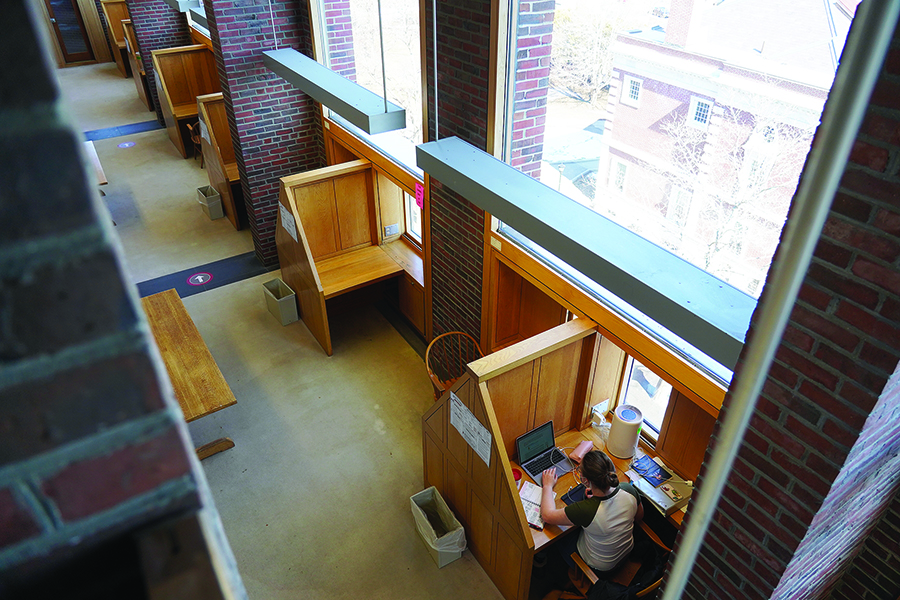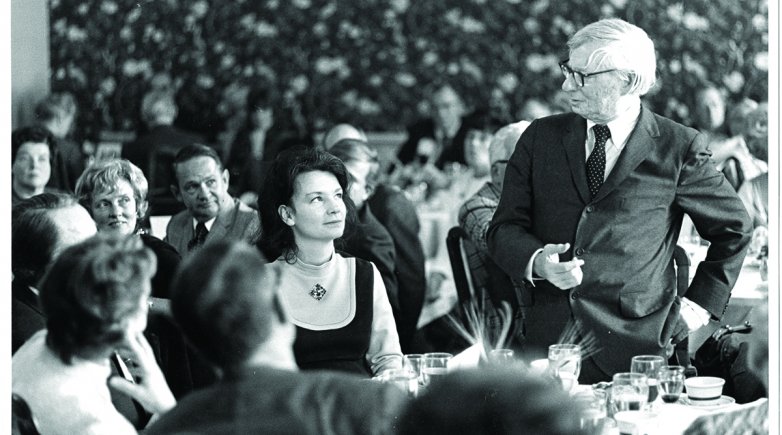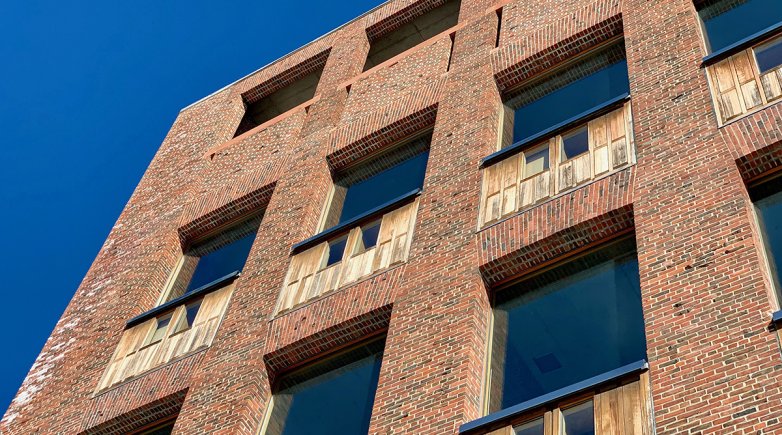A 'beacon' for Exeter
Architects and design fans weigh in on the majesty of Louis Kahn's masterwork, the Class of 1945 Library.
Timeless. Elemental. Accessible. Grounded in Exeter, both school and town. These are just a handful of ways in which architecture and building professionals wax lyrical about the Academy’s Louis Kahn-designed Class of 1945 Library.
The intellectual and cultural heart of campus, the library is also a celebrity to those who treasure design. Architecture lovers worldwide trek to Exeter to see Kahn’s creation, which turns 50 years old this year. As part of our celebration, we reached out to those who see the iconic building through the designer’s lens. Whether it’s the library’s inviting-yet-functional aspects, its widespread recognition as a campus linchpin, how it showcases Kahn’s genius, or how it fires the imagination of both students and professionals, these Kahn fans were more than happy to share their ardor.
According to William Richards ’00, who holds a PhD in art and architectural history and runs editorial and design consultancy Team Three, Kahn deftly creates something that stands apart yet is distinctively steeped in Exeter. “If you look at the context of where the library is, Louis Kahn doesn’t incorporate classical details in the way that Dunbar or the Academy Building do,” Richards says. “But he does use classical proportions. And he does use clinker bricks, irregular bricks from the Exeter brickyard, made from local clay.” The building’s materials and the way they’re used reveal an approach that’s both practical and personable. “Kahn used concrete and brick and glass in a really muscular way,” notes Richards. “But he was capable of creating a sense of intimacy too. You go into the atrium and look up and you see a giant X in the ceiling, lots of concrete floating above your head. But then you go to the periphery of the interior and you’ve got these side spaces that are incredible small and intimate, corner conferences spaces that are human-scaled. Kahn’s capable of the entire range, from big to small, from imposing to very approachable. He uses hard materials, but the brick, for example, is visually very warm, in a dozen shades from bright red to chocolate-brown; in the summer, the bricks are literally warm to the touch, which helps insulate the building. He’s using these hard materials, but he’s also giving them personality.” There’s also the narrative of the building, adds Richards. “The idea that you ascend the stairs, move through the atrium, go to the card catalogue, find the book you need, and you take that book and make your way to the periphery where the light is, and you sit in the carrel and study by the light. I think that’s a nice poetic sentiment. That’s what a library is all about.”

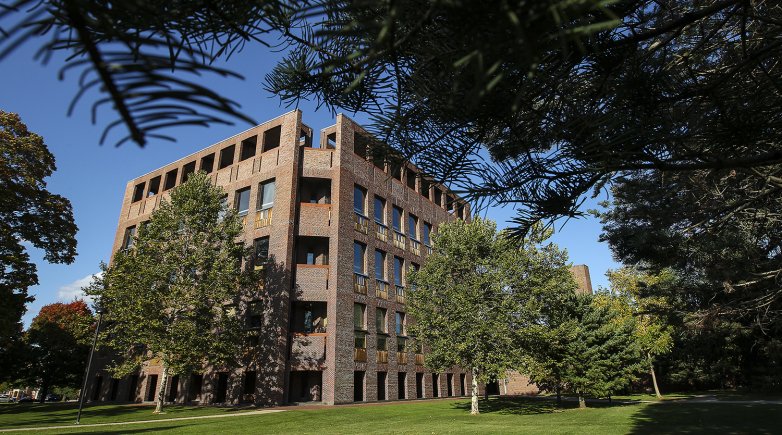
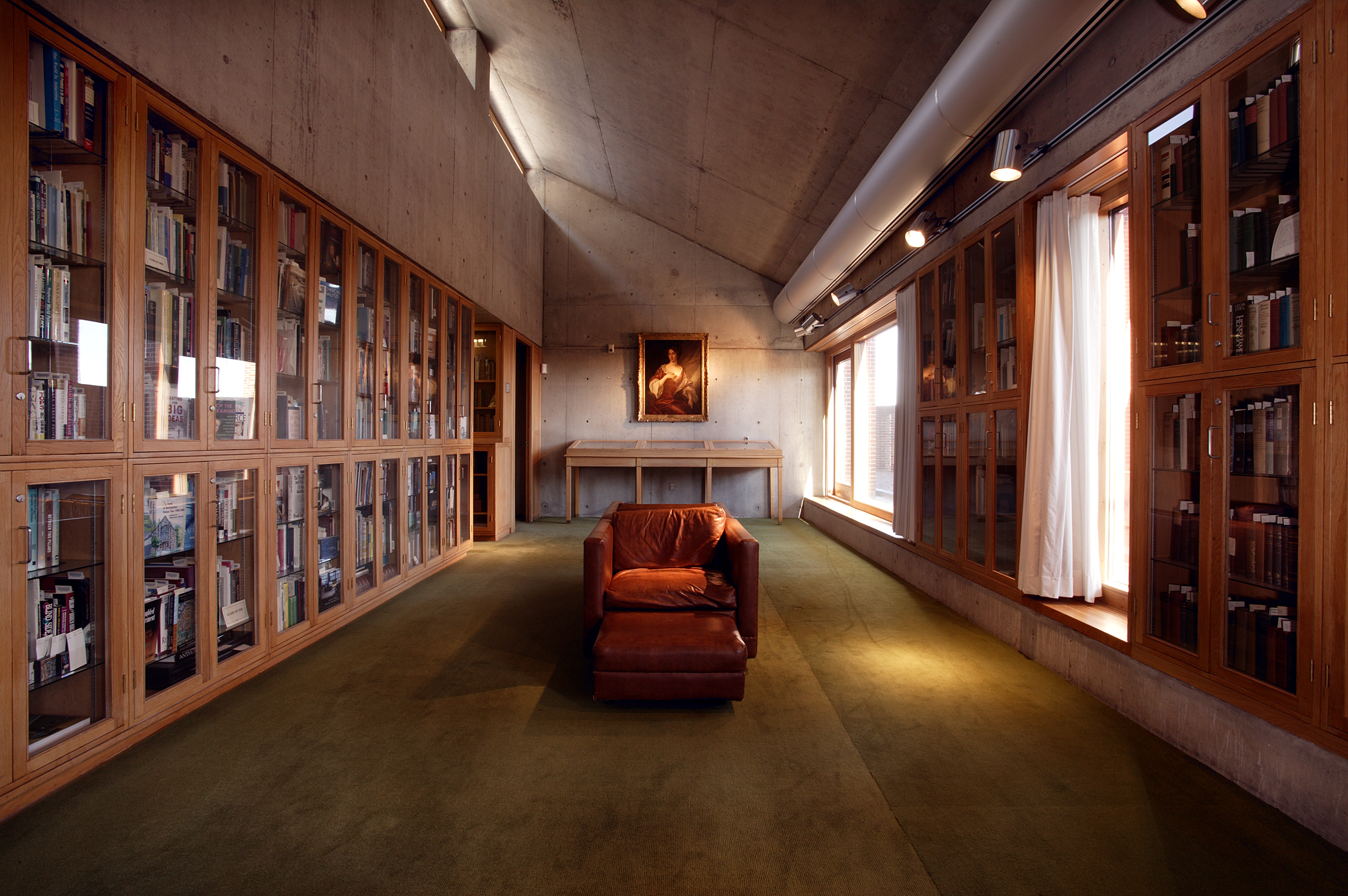 Lacasse feels the building’s impact on a more immediate level, too, having studied it since he was in design school. “It falls into a very small category of projects that, having studied it and finally getting to see it in person, exceeds expectations,” says Lacasse. “Oftentimes when you’ve built up an admiration of a building through books and magazines or other formats, when you actually visit, them they sort of fall flat.” This was the opposite, he says. “I think it’s the emotional experience that you get from the light and the warmth and the inviting nature of the finishes, the sensory experience. This was, ‘Wow, this is better than I thought!’”
Lacasse feels the building’s impact on a more immediate level, too, having studied it since he was in design school. “It falls into a very small category of projects that, having studied it and finally getting to see it in person, exceeds expectations,” says Lacasse. “Oftentimes when you’ve built up an admiration of a building through books and magazines or other formats, when you actually visit, them they sort of fall flat.” This was the opposite, he says. “I think it’s the emotional experience that you get from the light and the warmth and the inviting nature of the finishes, the sensory experience. This was, ‘Wow, this is better than I thought!’”